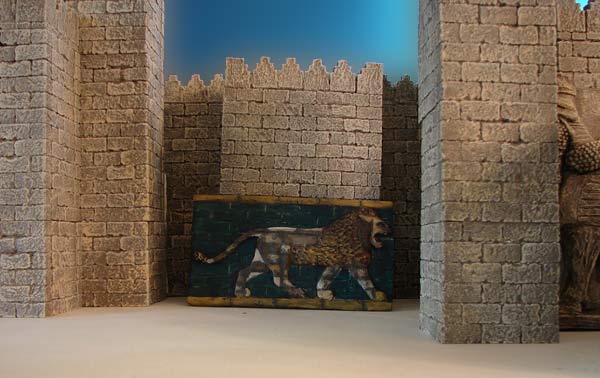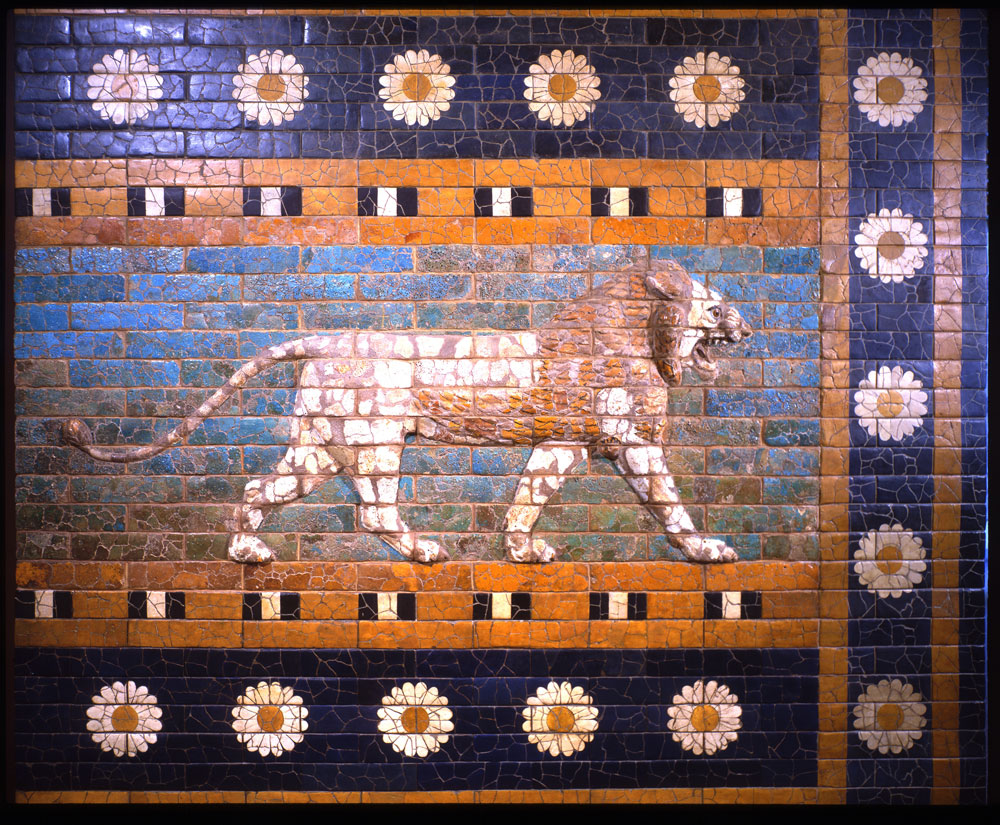|
Walls and Towers Assyria
|

The striding lion of Babylon was made of molded brick with polychrome glaze and appeared along the side of the 'Processional Way' in ancient Babylon in 604-562 B.C. The 'Processional Way' led out of the city through the massive Ishtar Gate, the lion was the symbol of the goddess Ishtar. There were some 120 lions such as this one decorated along the walls. This painting is from a wall relief at the Oriental Institute, University of Chicago. It is 90.3 cm high and 230.5 cm wide. It was purchased in Berlin in 1931. "For I will rise up against them," says the LORD of hosts, "And cut off from Babylon the name and remnant, And offspring and posterity," says the LORD. "I will also make it a possession for the porcupine, And marshes of muddy water; I will sweep it with the broom of destruction," says the LORD of hosts. Isaiah 14:22-23 Material - Molded brick with polychrome glaze Oriental Institute Excerpt STRIDING LION
|

































